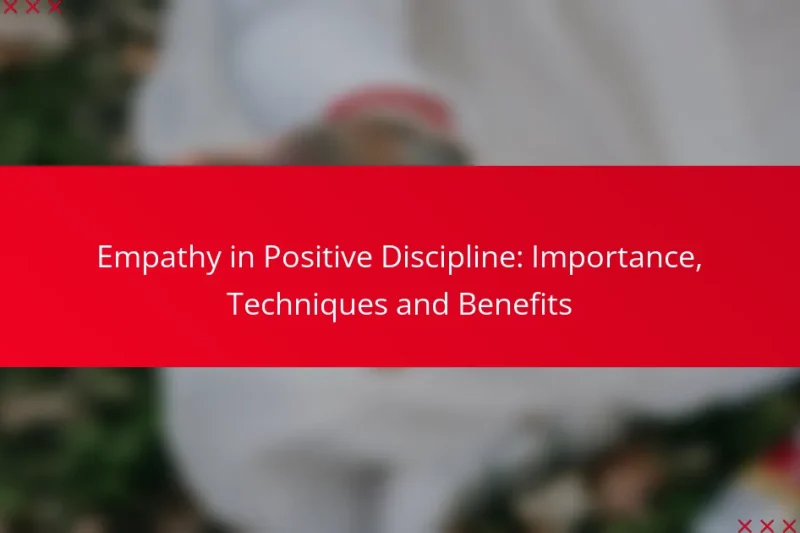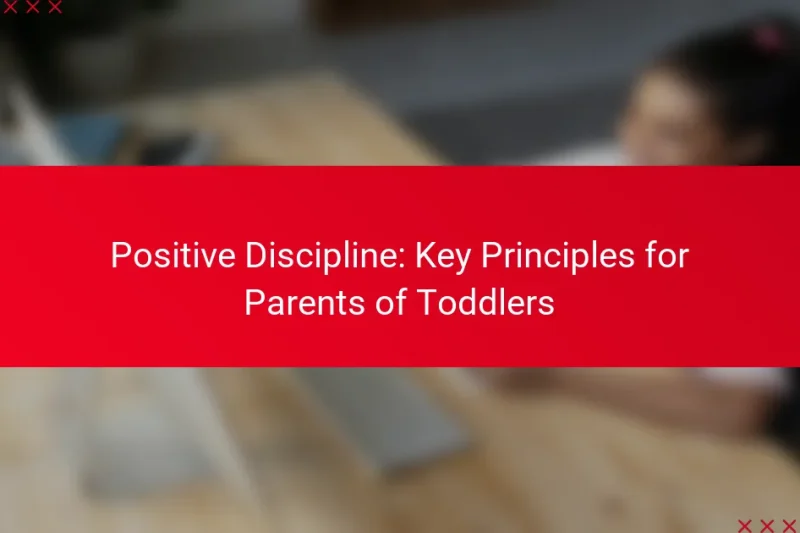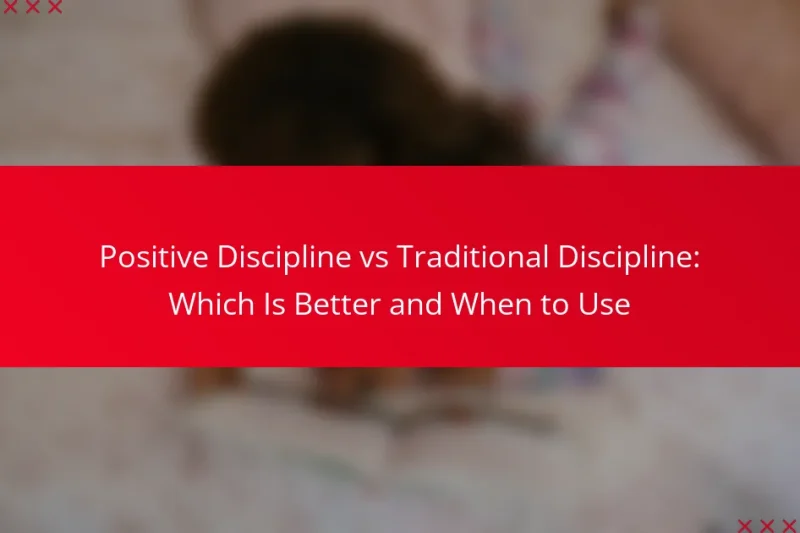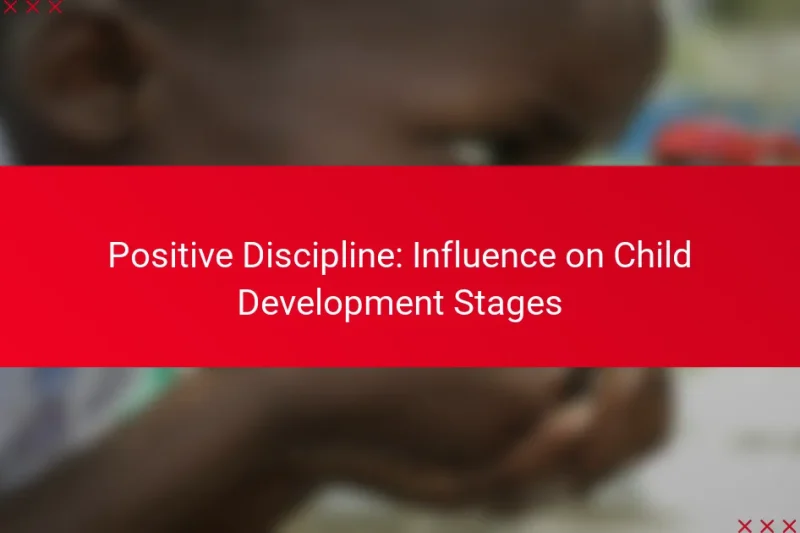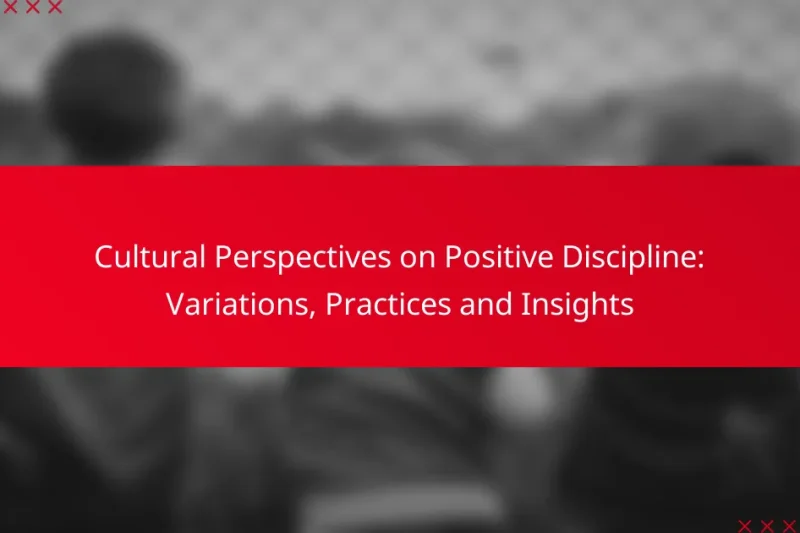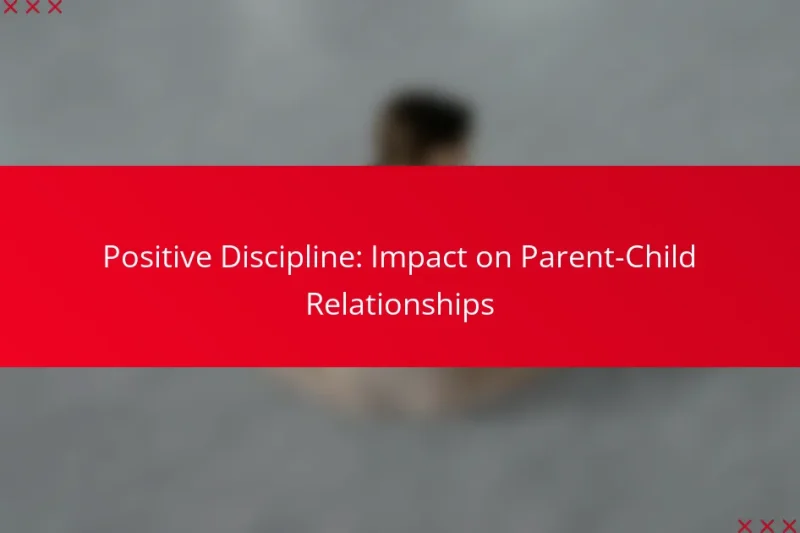Empathy plays a crucial role in positive discipline by enhancing communication and understanding between parents and … Empathy in Positive Discipline: Importance, Techniques and BenefitsRead more
Positive Discipline: Understanding Key Concepts
Positive Discipline is an approach that emphasizes teaching children self-control and responsibility within a nurturing environment. By focusing on respect and problem-solving, it encourages children to learn from their mistakes and develop essential life skills, fostering their emotional and social development.
Positive Discipline: Key Principles for Parents of Toddlers
Positive discipline provides parents of toddlers with effective strategies to guide behavior while nurturing a supportive … Positive Discipline: Key Principles for Parents of ToddlersRead more
Positive Discipline vs Traditional Discipline: Which Is Better and When to Use
When it comes to guiding children’s behavior, Positive Discipline and Traditional Discipline offer distinct approaches. Positive … Positive Discipline vs Traditional Discipline: Which Is Better and When to UseRead more
Positive Discipline: Influence on Child Development Stages
Positive Discipline plays a crucial role in shaping child development stages by promoting essential skills and … Positive Discipline: Influence on Child Development StagesRead more
Cultural Perspectives on Positive Discipline: Variations, Practices and Insights
Cultural perspectives on positive discipline reveal a rich tapestry of beliefs and practices that shape how … Cultural Perspectives on Positive Discipline: Variations, Practices and InsightsRead more
Positive Discipline Techniques: Strategies for Children with Special Needs
Positive discipline techniques for children with special needs are essential for creating a nurturing environment that … Positive Discipline Techniques: Strategies for Children with Special NeedsRead more
Positive Discipline: Impact on Parent-Child Relationships
Positive Discipline significantly enhances parent-child relationships by promoting empathy, understanding, and effective communication. By focusing on … Positive Discipline: Impact on Parent-Child RelationshipsRead more
What are effective strategies for Positive Discipline?
Effective strategies for Positive Discipline focus on teaching children self-control and responsibility while maintaining a supportive environment. These approaches encourage children to understand the impact of their actions and develop essential life skills.
Encouraging self-regulation
Encouraging self-regulation involves helping children manage their emotions and behaviors. Techniques such as modeling calm responses, using visual aids like emotion charts, and providing opportunities for children to practice self-soothing can be effective. For instance, when a child feels overwhelmed, guiding them to take deep breaths or count to ten can foster their ability to self-regulate.
Additionally, setting up routines can create a sense of stability, making it easier for children to anticipate what comes next and manage their reactions accordingly.
Building a positive relationship
Building a positive relationship with children is crucial for effective discipline. This can be achieved through consistent communication, active listening, and showing empathy. Spending quality time together, such as engaging in shared activities or having regular check-ins, strengthens the bond and fosters trust.
A strong relationship encourages children to feel safe and understood, making them more receptive to guidance and discipline strategies.
Setting clear expectations
Setting clear expectations helps children understand what behaviors are acceptable. This involves communicating rules in a straightforward manner and ensuring children comprehend the reasons behind them. For example, instead of simply stating “no running,” explain that running indoors can lead to accidents.
Reinforcing these expectations through consistent reminders and positive reinforcement when children follow the rules can further solidify their understanding.
Using logical consequences
Using logical consequences means connecting the outcome of a child’s behavior directly to their actions. For instance, if a child refuses to clean up their toys, a logical consequence might be that they cannot play with them until they are put away. This approach helps children see the direct relationship between their choices and the results.
It’s essential to ensure that consequences are fair and proportional, promoting learning rather than punishment.
Promoting problem-solving skills
Promoting problem-solving skills empowers children to find solutions to conflicts or challenges they face. Encouraging them to think critically about situations and brainstorm possible solutions fosters independence and resilience. For example, if siblings are arguing over a toy, guiding them to discuss their feelings and come up with a compromise can be beneficial.
Teaching children to evaluate the outcomes of their decisions also enhances their ability to navigate future challenges effectively.
How can Positive Discipline be applied in schools?
Positive Discipline can be effectively applied in schools by fostering a supportive environment that emphasizes respect, responsibility, and problem-solving. This approach encourages students to learn from their mistakes and develop self-discipline rather than relying on punitive measures.
Implementing classroom management techniques
Classroom management techniques in Positive Discipline focus on creating a structured yet flexible environment. Teachers can establish clear expectations and routines, which help students understand their responsibilities. Techniques such as using positive reinforcement, setting up collaborative problem-solving sessions, and maintaining open communication can significantly enhance classroom dynamics.
For example, teachers might implement a reward system that acknowledges positive behavior, encouraging students to engage in constructive actions. Additionally, incorporating regular check-ins with students can help address issues before they escalate, fostering a sense of community and support.
Training teachers in Positive Discipline
Training teachers in Positive Discipline is crucial for successful implementation. Professional development programs should focus on equipping educators with the skills to apply Positive Discipline principles effectively. Workshops and ongoing training sessions can provide teachers with practical strategies and resources to manage classroom behavior positively.
Moreover, schools can create mentorship programs where experienced teachers guide newer staff in applying Positive Discipline techniques. This peer support can enhance confidence and ensure consistency in approach across the school, ultimately benefiting the students’ learning environment.
What are the benefits of Positive Discipline for children?
Positive Discipline offers numerous benefits for children, including fostering their emotional and social development. By emphasizing respect and understanding, it helps children learn self-discipline, responsibility, and cooperation.
Improved emotional intelligence
Positive Discipline enhances children’s emotional intelligence by teaching them to recognize and manage their feelings. Through consistent guidance, children learn to express emotions appropriately and develop empathy towards others.
For instance, when a child faces frustration, Positive Discipline encourages them to articulate their feelings rather than react impulsively. This skill not only aids in personal relationships but also contributes to better conflict resolution.
Enhanced social skills
Children practicing Positive Discipline often exhibit improved social skills, as they learn the importance of communication and cooperation. Engaging in group activities and discussions helps them understand social cues and build friendships.
For example, a child who learns to share and take turns during playtime is more likely to form strong bonds with peers. These skills are essential for teamwork and collaboration in both academic and social settings.
Increased academic performance
Positive Discipline can lead to increased academic performance by fostering a supportive learning environment. Children who feel respected and understood are more motivated to engage in their studies and participate actively in class.
Research suggests that children with strong emotional and social skills tend to perform better academically. By cultivating these skills through Positive Discipline, parents and educators can help children achieve their full potential in school.
What are common misconceptions about Positive Discipline?
Many people misunderstand Positive Discipline, believing it promotes a lack of boundaries or is overly lenient. In reality, Positive Discipline emphasizes teaching children self-discipline and responsibility while maintaining a structured environment.
Positive Discipline is permissive
A common misconception is that Positive Discipline allows children to do whatever they want without consequences. However, this approach actually focuses on guiding children through understanding the impact of their actions while setting clear expectations.
For instance, instead of simply saying “no,” a parent might explain why a behavior is unacceptable and discuss alternative actions. This method fosters respect and accountability rather than permissiveness.
It lacks structure
Another myth is that Positive Discipline lacks the necessary structure for effective parenting. In contrast, it provides a framework that combines empathy with clear guidelines, helping children learn appropriate behavior within defined limits.
Parents using Positive Discipline often establish routines and consistent consequences, which help children feel secure. For example, a regular schedule for homework and chores can create a sense of order while teaching responsibility.
What frameworks support Positive Discipline?
Positive Discipline is supported by various frameworks that emphasize constructive approaches to behavior management. Key frameworks include restorative practices and social-emotional learning, both of which focus on fostering a supportive environment for children and promoting their emotional and social development.
Restorative practices
Restorative practices focus on repairing harm and restoring relationships rather than solely punishing misbehavior. This approach encourages open dialogue between affected parties, allowing individuals to express their feelings and understand the impact of their actions. Schools implementing restorative practices often see a reduction in repeat offenses and an increase in community cohesion.
To effectively incorporate restorative practices, educators can facilitate circles where students discuss conflicts and collaboratively develop solutions. This method not only addresses the immediate issue but also strengthens interpersonal skills and empathy among students.
Social-emotional learning
Social-emotional learning (SEL) equips students with essential skills for managing emotions, setting goals, and establishing positive relationships. By integrating SEL into the curriculum, educators help students develop self-awareness and social awareness, which are critical for navigating challenges both in and out of the classroom.
Effective SEL programs often include activities that promote teamwork, conflict resolution, and emotional regulation. For instance, role-playing scenarios can help students practice responding to peer pressure or resolving disputes amicably. Schools that prioritize SEL typically report improved academic performance and reduced behavioral issues.
How does Positive Discipline differ from traditional discipline?
Positive Discipline focuses on teaching children appropriate behaviors rather than punishing them for mistakes. This approach emphasizes understanding, respect, and the development of life skills, contrasting sharply with traditional methods that often rely on fear and compliance.
Focus on teaching vs. punishment
Positive Discipline prioritizes teaching children how to make better choices instead of simply punishing them for wrong actions. This method encourages open communication and problem-solving, allowing children to learn from their experiences. For example, instead of a time-out for misbehavior, a parent might engage the child in a discussion about the consequences of their actions.
By fostering a supportive environment, children are more likely to internalize lessons and apply them in the future. This approach can lead to more respectful relationships between parents and children, as it promotes understanding rather than fear.
Encouragement of intrinsic motivation
Positive Discipline aims to cultivate intrinsic motivation in children, encouraging them to act based on internal values rather than external rewards or punishments. This can be achieved by recognizing and praising efforts rather than just outcomes, which helps children develop a sense of self-worth and responsibility.
For instance, instead of offering a reward for completing chores, parents can express appreciation for the child’s contribution to the family. This method not only reinforces positive behavior but also helps children understand the importance of their actions in a broader context.
What role do parents play in Positive Discipline?
Parents play a crucial role in Positive Discipline by guiding their children through consistent, respectful, and constructive interactions. This approach emphasizes teaching rather than punishing, fostering a supportive environment where children can learn from their mistakes.
Modeling appropriate behavior
Modeling appropriate behavior is essential in Positive Discipline, as children often learn by observing their parents. When parents demonstrate respectful communication, problem-solving, and emotional regulation, children are more likely to imitate these behaviors in their own interactions.
To effectively model behavior, parents should be mindful of their actions and reactions in various situations. For example, expressing frustration calmly instead of yelling teaches children how to handle their emotions without resorting to anger.
Additionally, parents can reinforce positive behavior by acknowledging and praising their children when they exhibit desirable traits. This not only boosts the child’s self-esteem but also encourages them to continue practicing those behaviors.
